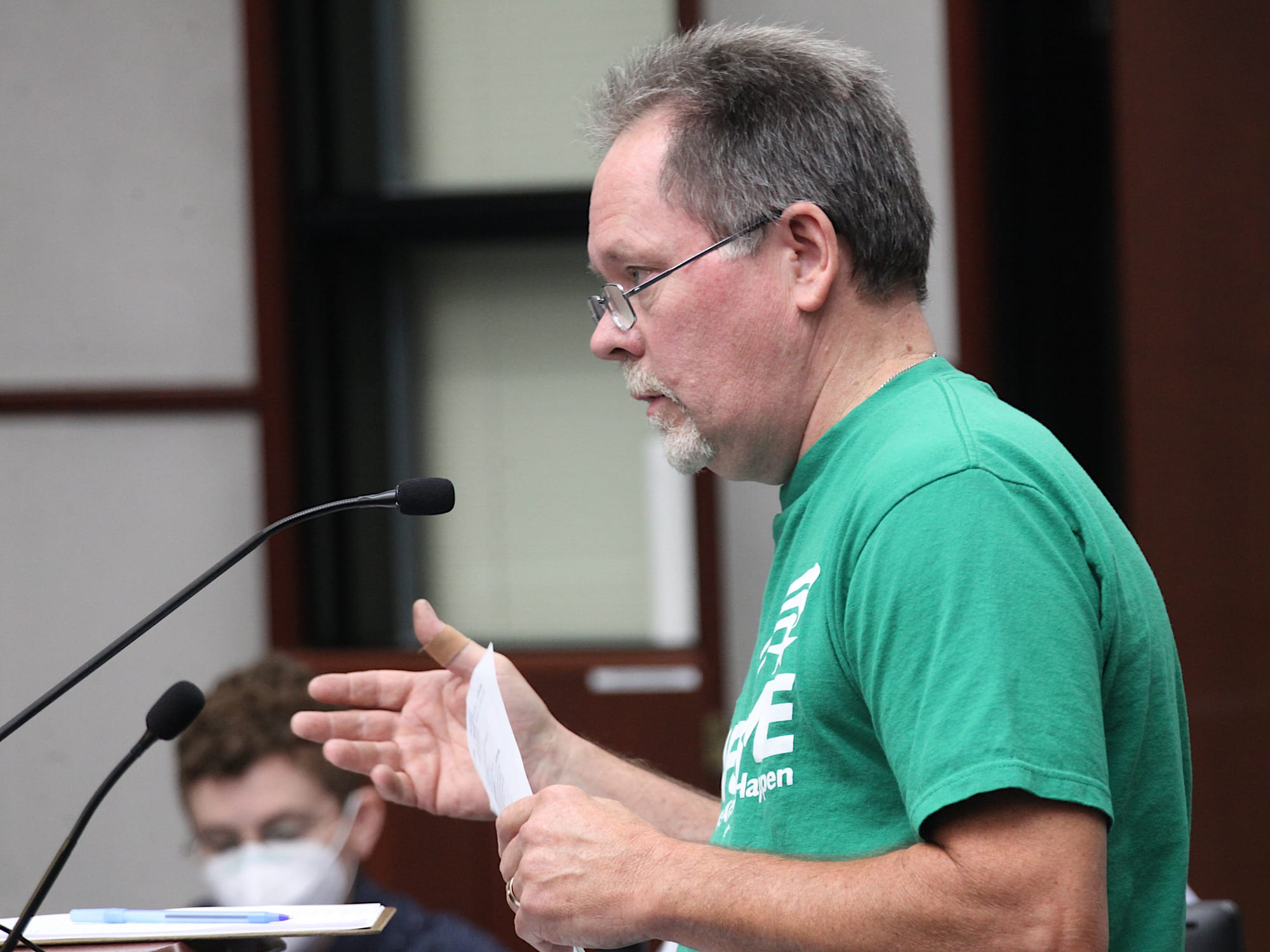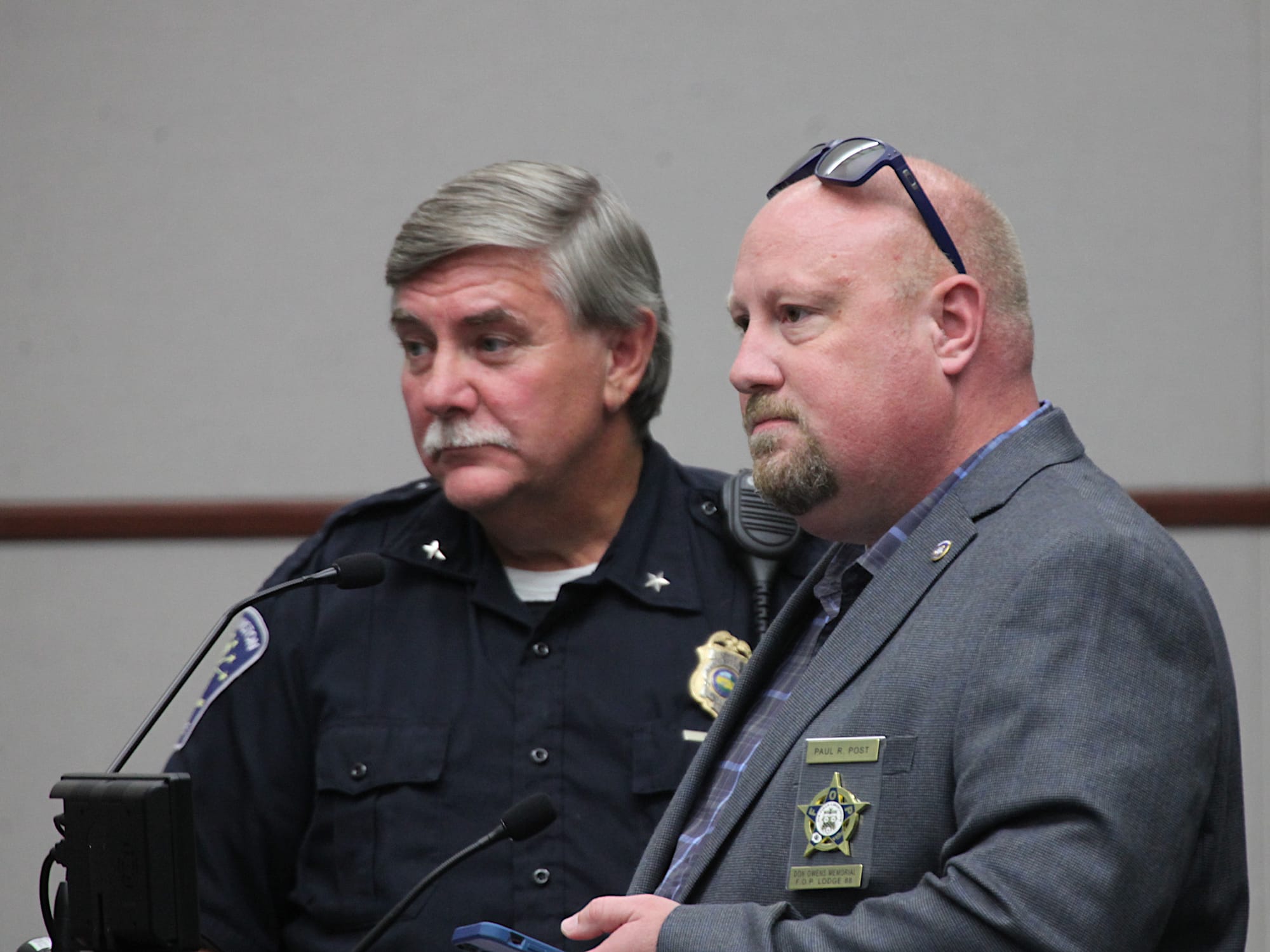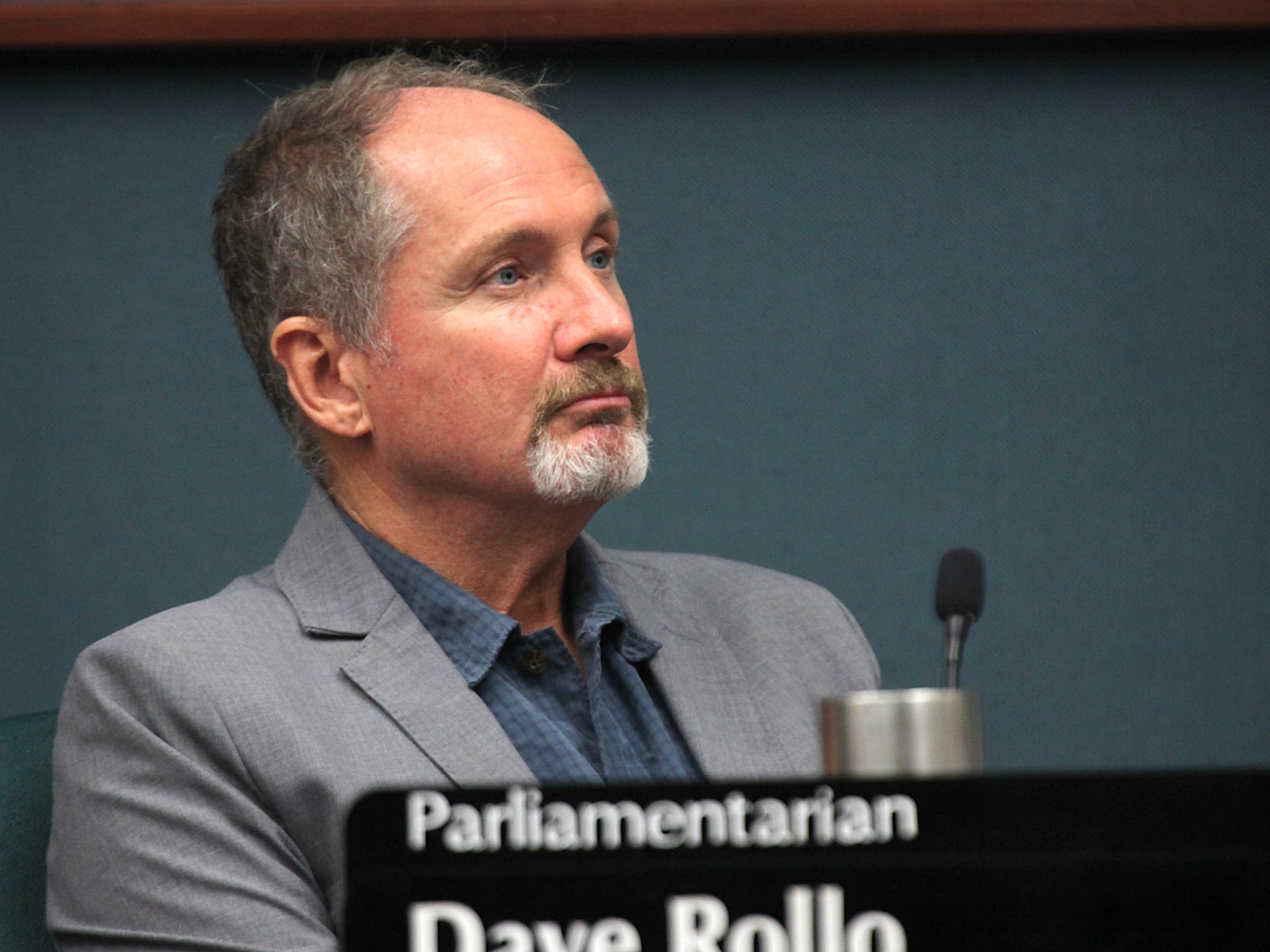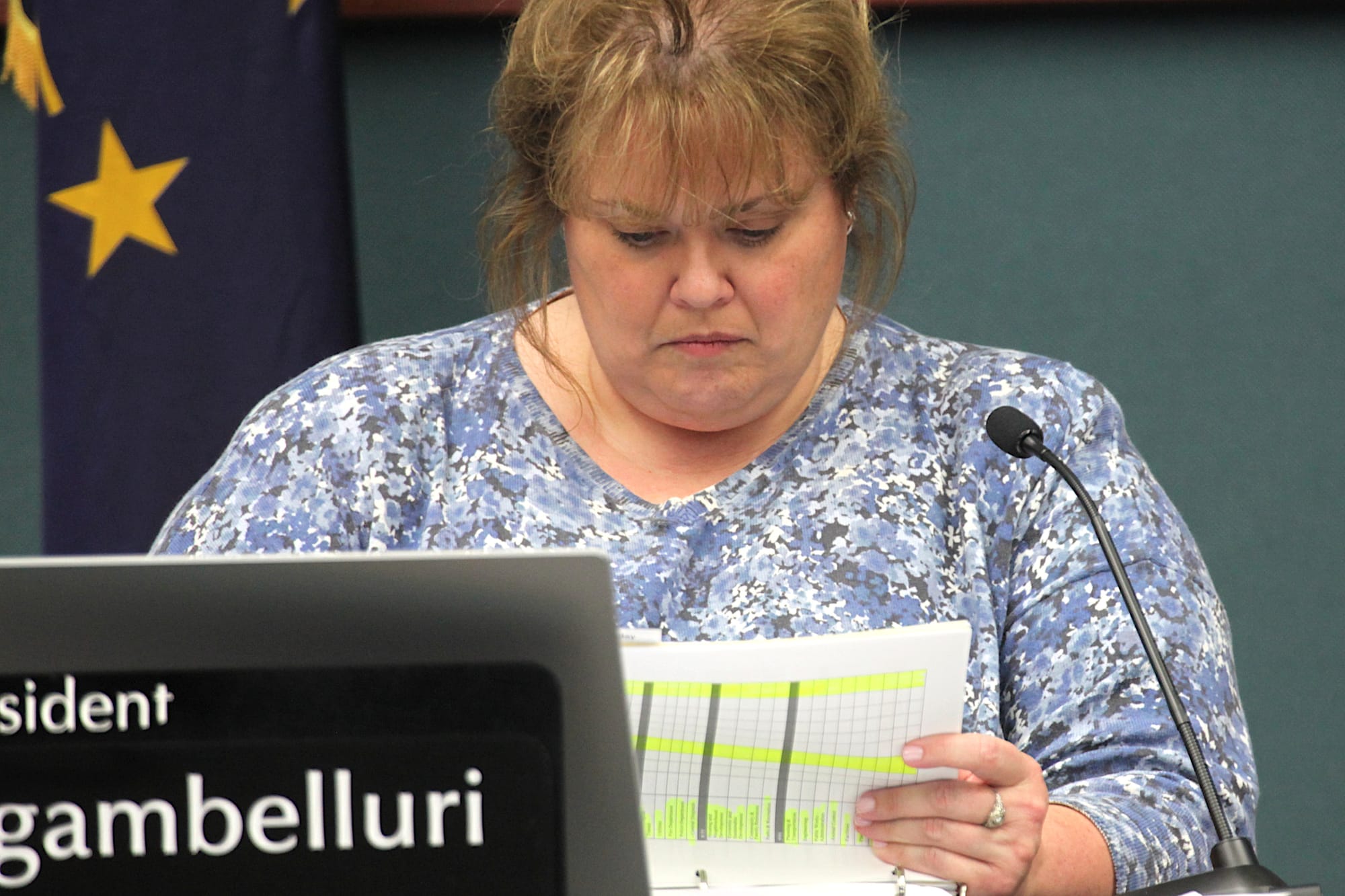Bloomington 2023 budget notebook: Compensation, scooters, fire stations, trash fees, coins for parking







The hour was close to 11:30 p.m. on Thursday when Bloomington’s city council wrapped its fourth night of departmental budget presentations in a row, each starting at 6 p.m.
Over the four days, the council racked up a total of 17 hours and 40 minutes worth of meeting time.
That intense burst of activity will be followed by the submission of written followup questions by city councilmembers to the administration. Based on past practice, answers to those questions will eventually be released, sometime before the 2023 budget ordinances get a first reading in front of the city council.
The first readings are currently set for a little more than three weeks from now, on Sept. 28. The city’s 2023 budget is currently set for adoption by the council on Oct. 12.
Questions from councilmembers to several department heads reflected a concern about adequate compensation in the context of 7.5-percent inflation measured from December 2020 to December 2021.
Fire chief Jason Moore delivered an outlook on the 4th Street fire station that was somewhat less grim than previous assessments. The station was damaged during the June 2021 downtown flood. Moore indicated that rehabilitation of the building is not completely off the table.
Ongoing concern about shared electric scooters blocking sidewalks and ADA ramps prompted questions to at least three different departments—legal, economic and sustainable development, and public works.
Public works director Adam Wason sketched out a possible new rate structure for trash carts that would be a part of the city’s plan to transition away from any general fund support for trash collection. That new rate structure, which would mean at least a 50-percent increase in the first year, would have to get approval from the city council separate from the 2023 budget.
Councilmembers were generally cool to the idea of complete elimination of coins as a possible way to pay for parking meters.
Employee compensation
On late Tuesday afternoon during the week of budget presentations, a couple dozen AFSCME city union workers gathered on the steps of city hall to demonstrate. They object to the decision by the city of Bloomington mayor John Hamilton’s administration to pause their collective bargaining talks in the lead-up to the budget presentations.
The acronym for the union name stands for American Federation of State, County and Municipal Employees. The union includes workers in utilities, the street and fleet divisions of public works, parks and recreation, sanitation, and the animal shelter, among others.
In the proposed 2023 budget, non-union city employees who don’t have collectively bargained contracts, will get a 5-percent cost-of-living increase for 2023. Regular employees, with some exceptions in the police department and the dispatch center, will receive quarterly bonuses of $250 for a total of $1,000 in bonus pay.
For union employees, the increases for 2023 have been set under contract—except for members of AFSCME, who are currently supposed to be in negotiations with the administration for their new agreement, which will run from 2023 through 2026.
The pause in negotiations prompted Tuesday’s city hall demonstration by AFSCME employees. When Hamilton emerged from the city hall building he was greeted by AFSCME workers who chanted in call-and-response fashion: “What do we want? A contract! When do we want it? Now!”
On Monday, responding to a councilmember question, city controller Jeff Underwood said that the proposed 2023 budget does not reflect any increase in base salary for AFSCME workers, but does include a quarterly $250 bonus on par with other city workers.
Already at an early August city council meeting, AFSCME leadership, supported by a couple dozen members who attended, called for pay increases in the new contract that would make compensation for Bloomington’s AFSCME workers competitive.
Bloomington police officers will be receiving around a 13-percent increase under next year’s contract, which has already been ratified by the city council. Under their union contract, Bloomington firefighters will be receiving a 2-percent raise.
Through the week, councilmembers asked department heads if any AFSCME workers are employed in their departments.
Even though the police union contract is set with a substantial pay increase, councilmembers are concerned about the city’s ability to recruit new officers. The department currently has just 81 sworn officers on staff, out of the 105 officers who are budgeted. On Tuesday, Bloomington police chief Mike Diekhoff told the council that of the 81 just 72 are available—because they are on military leave, or they are on long-term sickness or injury leave, or because they are waiting to be trained at the police academy.
At a recruitment event the previous Saturday, 28 people showed up, Diekhoff said—out of 42 who had RSVP-ed. The 28 have already been reduced to 21, Diekhoff said, because some of them didn’t pass the stand-mandated physical agility test.
Diekhoff said, “We’re just constantly always in this hiring phase.”
A talent acquisition specialist, which is a new position in the human resources department that is proposed to be added for the 2023 budget, is supposed to focus on recruitment of police officers and firefighters.
Downtown fire station
After the June 2021 downtown flood damaged the 4th and Lincoln downtown fire station, Bloomington’s fire department established a temporary location four blocks west at 4th and College.
An initial assessment was that it might be inadvisable to rehab the existing building, given the potential threat of a repeat flood.
During his departmental budget presentation to the city council, Bloomington fire chief Jason Moore said that 42 different properties had been evaluated for potential relocation of the damaged station.
But Moore told the council that a flooding model developed by city of Bloomington utilities (CBU) in connection with the Hidden River project is now available. An image from CBU director Vic Kelson’s slide deck showed a contrasting before-and-after modeling for the project. The Hidden River project expands the capacity of the culvert that runs under downtown Bloomington from the edge of the Indiana University campus.
Moore said in the context of that model, the fire department is now evaluating the feasibility of returning to the damaged fire station. Moore pointed out that if rehabbing the existing building is a viable option, it would be a lot less expensive than purchasing new property and building a new station from scratch.
Moore indicated that potential alternate locations couldn’t be revealed at this point. But if a new location has to be chosen, the fire department would engage the city council and the rest of the community to “make sure that we’re making good choices, and everyone’s properly informed.”
Shared electric scooters
City council reaction to the legal department’s budget presentation on Monday, which came from corporation counsel Beth Cate, included criticism of the way the city is handling violations of the scooter parking ordinance.
It was more than three years ago, on July 31, 2029 when the council approved the ordinance enabling the use of public right-of-way for operation of shared electric scooters. In that time, the city has not issued any fines, despite city attorney Mike Rouker’s assurance at the time: “[The city of Bloomington] will be fining them every single time we see a parking issue.”
Commenting on the legal department’s budget, councilmember Isabel Piedmont-Smith said, “We, as a city, have done a terrible job enforcing our scooter rules for parking and utilizing scooters on public property.” Piedmont-Smith characterized the administration’s current approach as “wait and see.”
For her part, Piedmont-Smith said, “Well, we have waited and we have seen, that scooter companies and scooter users are not following the regulations that this body passed.” She added, “And it’s way past time to start invoking fees and other legal measures against them.”
Offering another option to enforce compliance was councilmember Matt Flaherty, who described his experience using a scooter and trying to park on the Indiana University campus, where digital geofences are set up that define allowable places to park a scooter. When he reached his destination, Flaherty’s scooter did not allow him to park and end the charges accruing to his account, until he was able to locate a place where the scooter was allowed to be parked under the campus geofencing.
According to Bloomington IT director Rick Dietz, a geofence is not something the city itself would establish. Instead the IT department could provide the geographic information that the scooter companies could use, to define geofenced areas that would allow scooter parking.
Later in the week, economic and sustainable development director Alex Crowley contrasted Flaherty’s anecdote with a kind of story that he hears from scooter companies: A scenario unfolds where an Indiana University student will ride a scooter up to a classroom building, there will be no immediately available legal parking corral, which means they cannot end their ride, so they go to class, and allow the scooter to continue accruing charges.
Crowley said there is no magic bullet, and that any one strategy on its own won’t work. What could work, Crowley said, is a combination of strategies—like establishing geofenced corrals, punishments for riders, and punishments for companies.
On Friday (Aug. 26), the same day the 2023 budget was released, the administration sent a memo to the city council that included a kind of status report on electric scooter issues.
The memo was quoted out by Piedmont-Smith on Wednesday during discussion about the budget presentation from the economic and sustainability department:
Enforcement measures such as issuing fines for individual violations and impounding scooters could require significant staff time (and, for impounding scooters, temporary storage facilities). It may be more cost-effective and efficient to recommend to the Board of Public Works an increase in the companies’ annual license payment and/or per-ride fees, as an enforcement alternative to staff-demanding enforcement measures.
Piedmont-Smith said, “This, to me, is a non-starter.” She continued, “Obviously, they are not enforcing the rules themselves. They have proven themselves incapable of doing that.” Piedmont-Smith added, “The memo says we’re going to recommend an increase in the fees. Why don’t you start fining instead?”
On Thursday, public works director Adam Wason told the council that public works employees who are out on the street had been given a directive: If they see a scooter blocking a walkway, they are supposed to move it. “I’m sure we’ve moved hundreds if not thousands of scooters,” Wason said. He added, “Heck, I’ve moved hundreds, probably not thousands.”
Wason said the city is now advertising two temporary part-time positions that will specifically focus on nothing other than scooter enforcement. Those two employees will work on what Wason called a “pilot program” of documenting scooters blocking sidewalks and ADA ramps. Wason said the information they collect would be given to the scooter companies.
Wason blamed the riders more than the scooter companies: “I think we could all probably agree it’s not often the scooter companies themselves that are creating the violation, but the user that leaves it after their ride that creates the issue.”
Councilmember Dave Rollo responded by saying it should not be up to the city to clear the sidewalks of scooters. There needs to be some other action taken, Rollo said, like issuing fines.
Trash rates
The proposed 2023 budget includes a three-year plan to eliminate general fund support for city trash collection services. The amount of general fund money needed to make up the difference between revenue from fees and the actual cost of providing the service has been around $1 million a year, according to city controller Jeff Underwood.
To eliminate that general support would mean fee increases. Any increase to trash collection fees would require a change to city code. That means it would require approval of an ordinance, separate from approval of the 2023 budget.
On Thursday, public works director Adam Wason sketched out a potential new fee schedule for the Year 1 increases:
- 35 gallons: increase from $6.51 to $9.75 (50% more)
- 64 gallons: increase from $11.61 to $18.25 (57% more)
- 96 gallons: increase from $18.52 to $31.50 (70% more)
Under the Bloomington local code, it’s just buildings with four dwelling units or fewer that receive the city’s curbside trash and recycling pickup services. The city does not charge for any of the three sizes of recycling carts. Large multi-family apartment buildings don’t get the curbside waste collection service.
That difference in service is the basis of councilmember Matt Flaherty’s framing of the issue in terms of equity.
On Thursday, Flaherty offered an analogy to water service: If water service were handled the same way as Bloomington’s current curbside waste collection rate system, it would mean discounting the water bill just for those people who live in single-family homes or buildings with four or fewer units, and paying for that discount by tapping the general fund.
The difference between the two groups is itself not equitable, Flaherty said. He added that the group that gets the discount is “disproportionately wealthier and whiter than the whole of Bloomington.”
Elimination of coins for parking meters
One of the possibilities that is included in the city’s 2023 budget proposal is the idea of eliminating the use of coins as a payment method for parking meters.
On Thursday, public works director Adam Wason described the cost savings on collection and coin processing. He said he is looking forward to talking with the city’s parking commission about addressing the challenges that would be associated with eliminating coins.
Councilmember Isabel Piedmont-Smith encouraged Wason to include the city’s council for community accessibility in discussions about eliminating coins from parking meters. “Some people do not have a credit card. Some people do not have smartphones. Some people have neither, and they need to have an option to park,” Piedmont-Smith said.
Councilmember Dave Rollo said, “Doing away the coins would be exclusionary and discriminatory. And I think that we really ought to think hard on that one and probably not do that.”




Comments ()